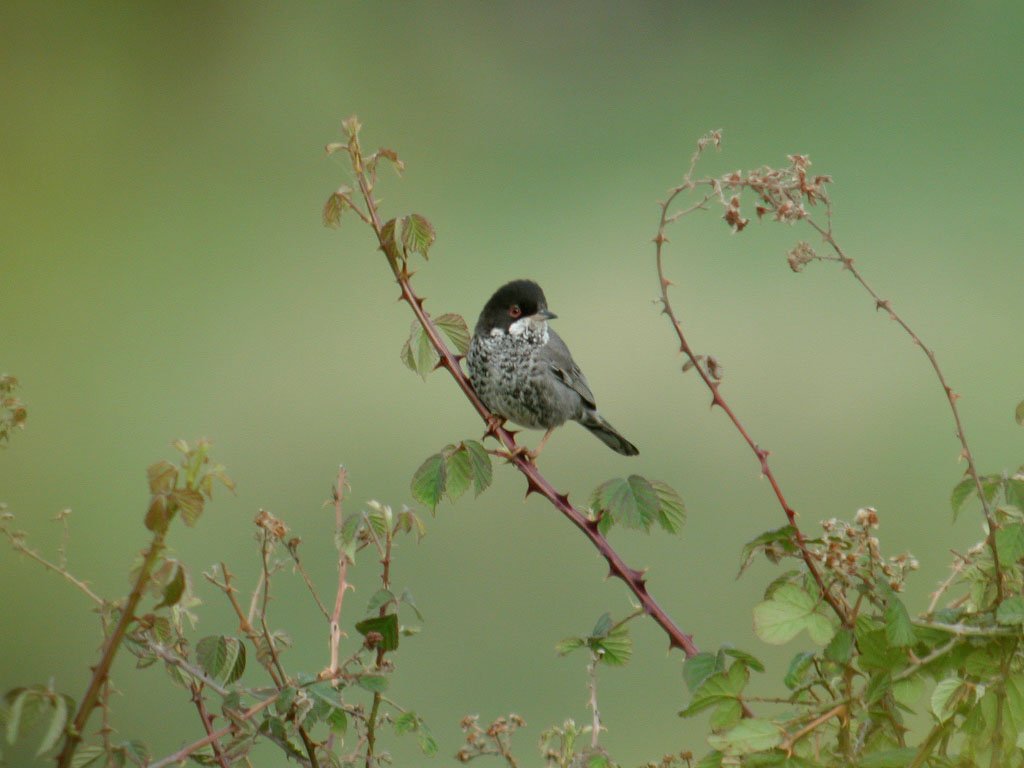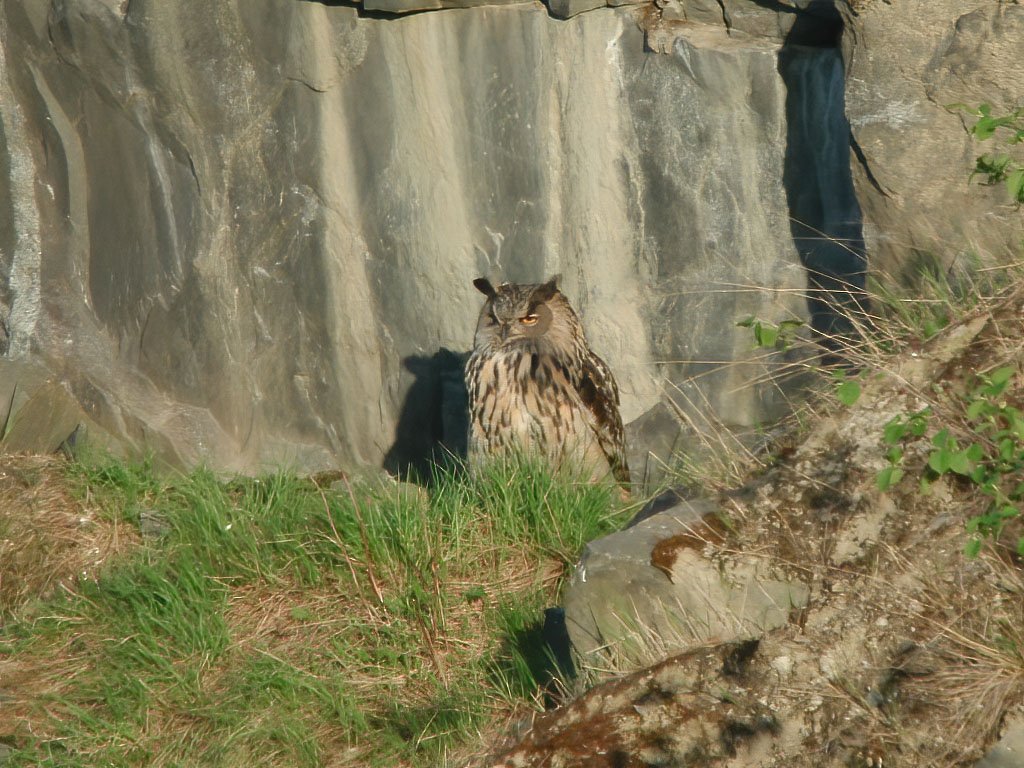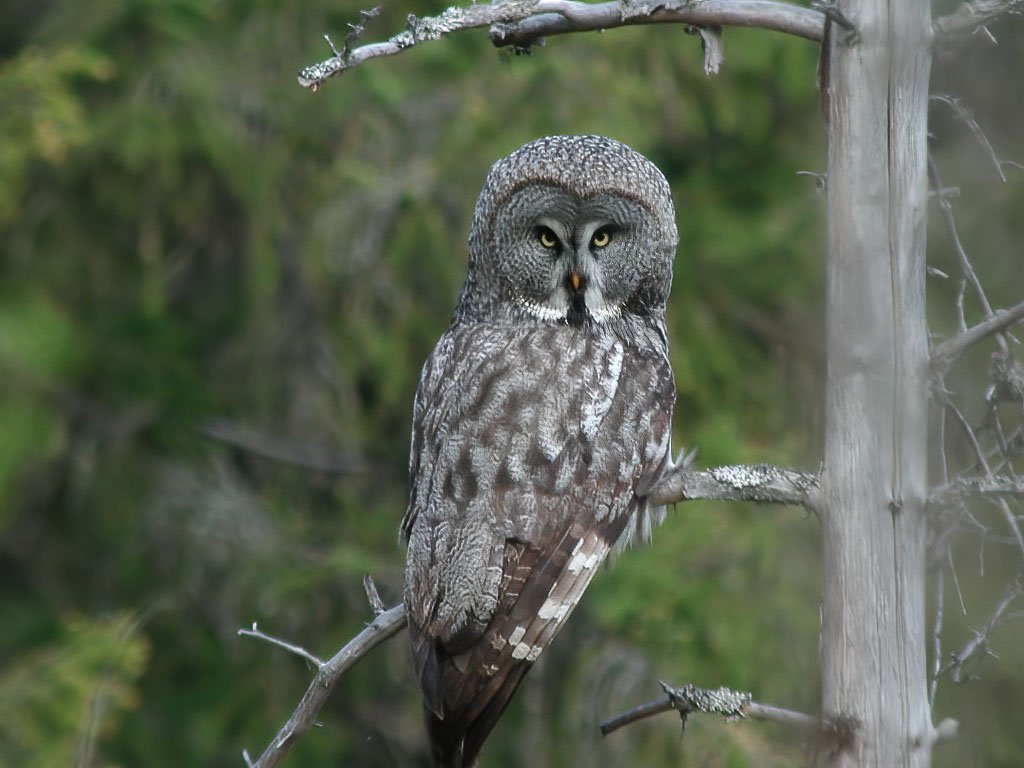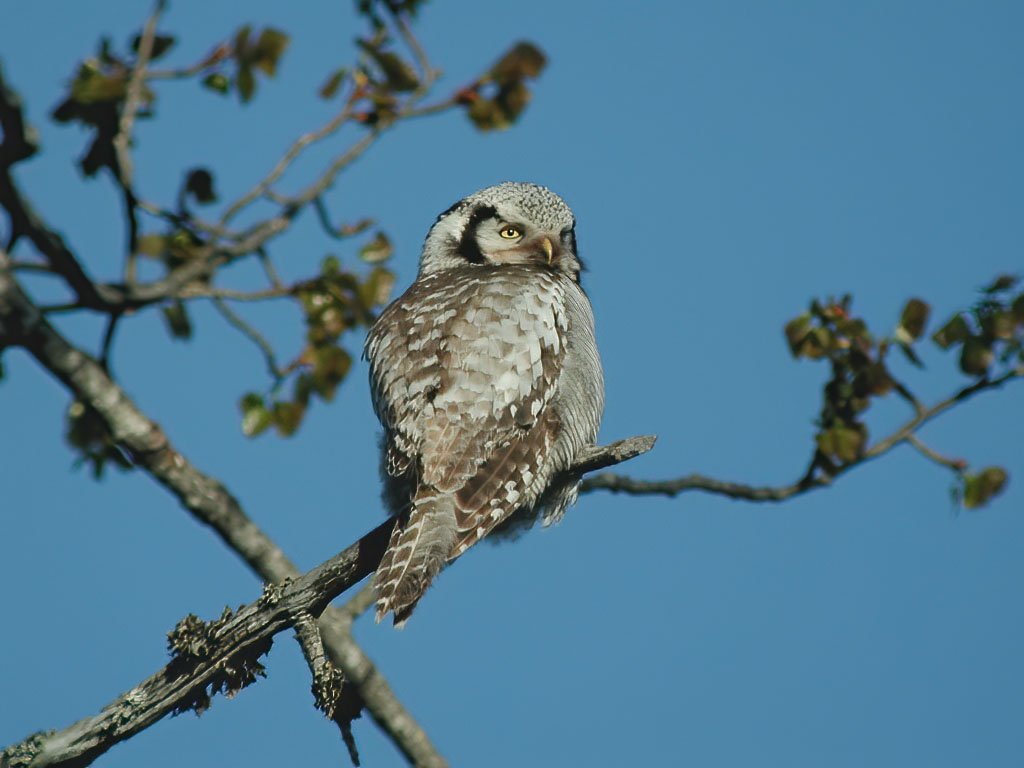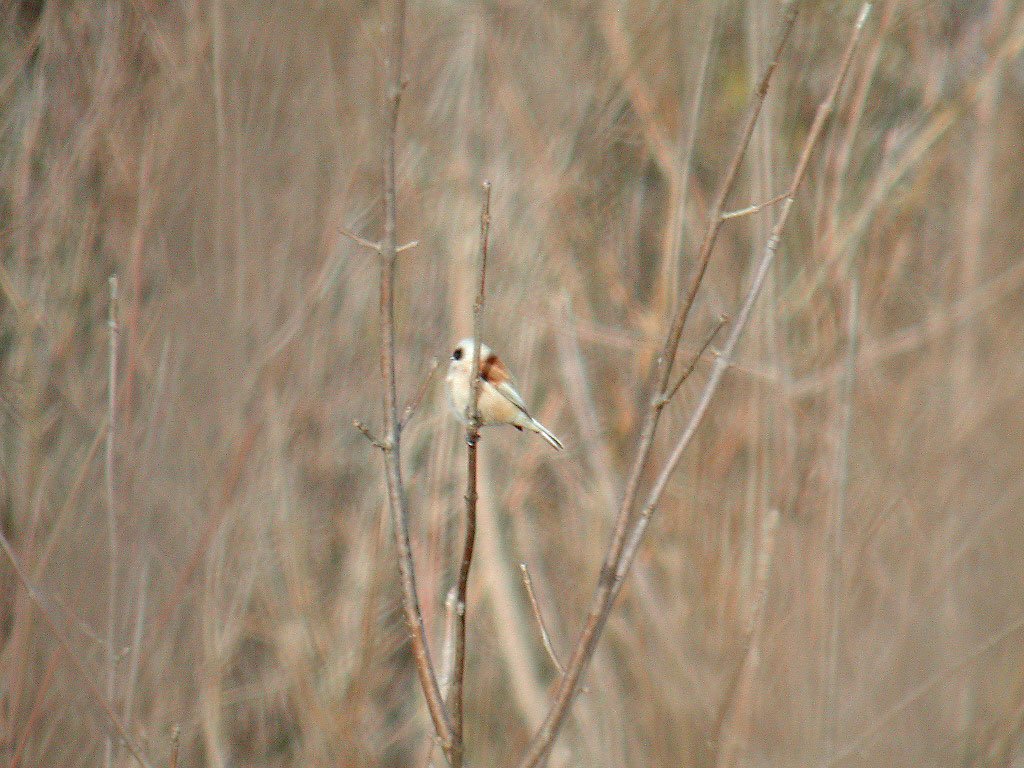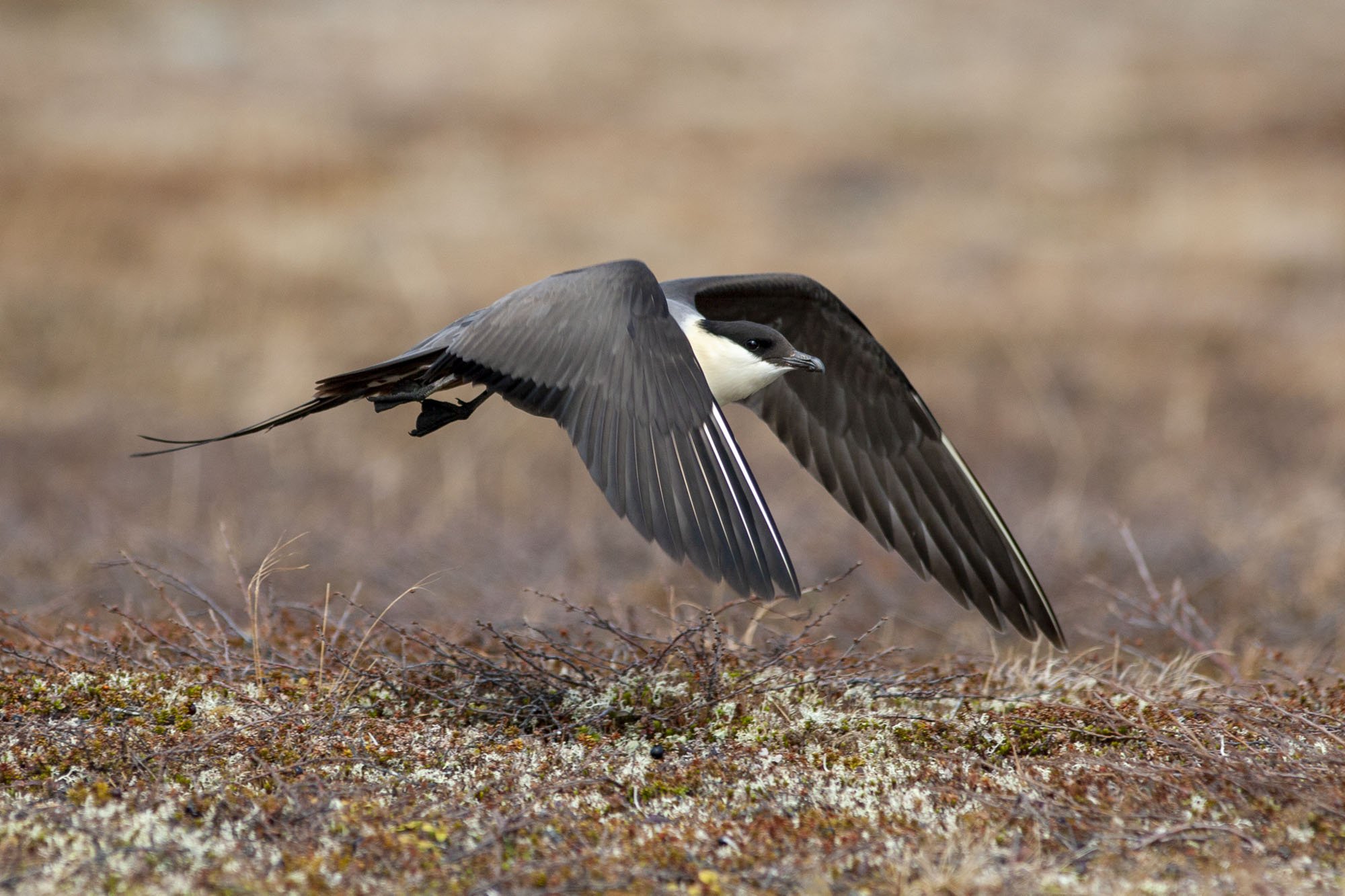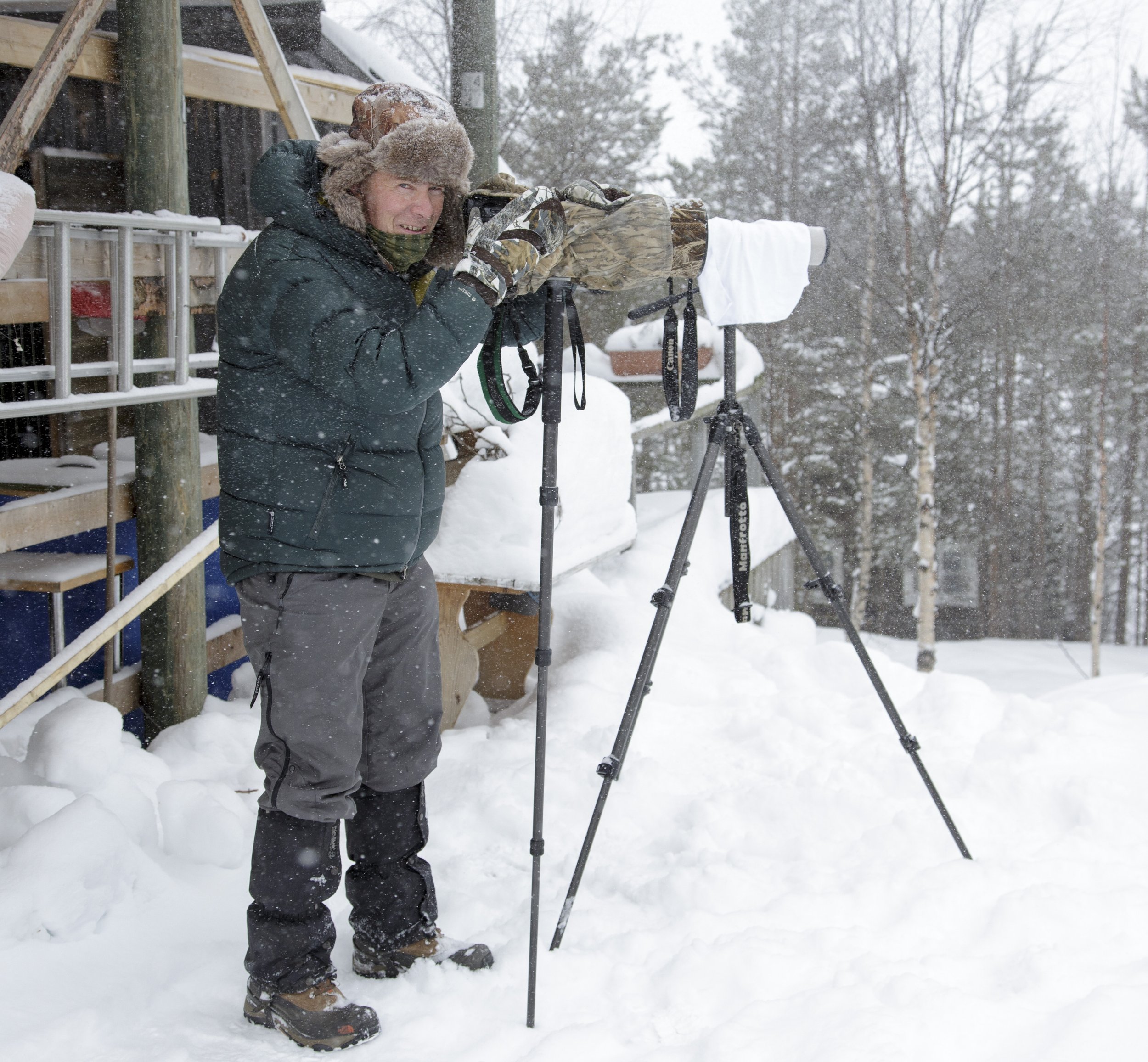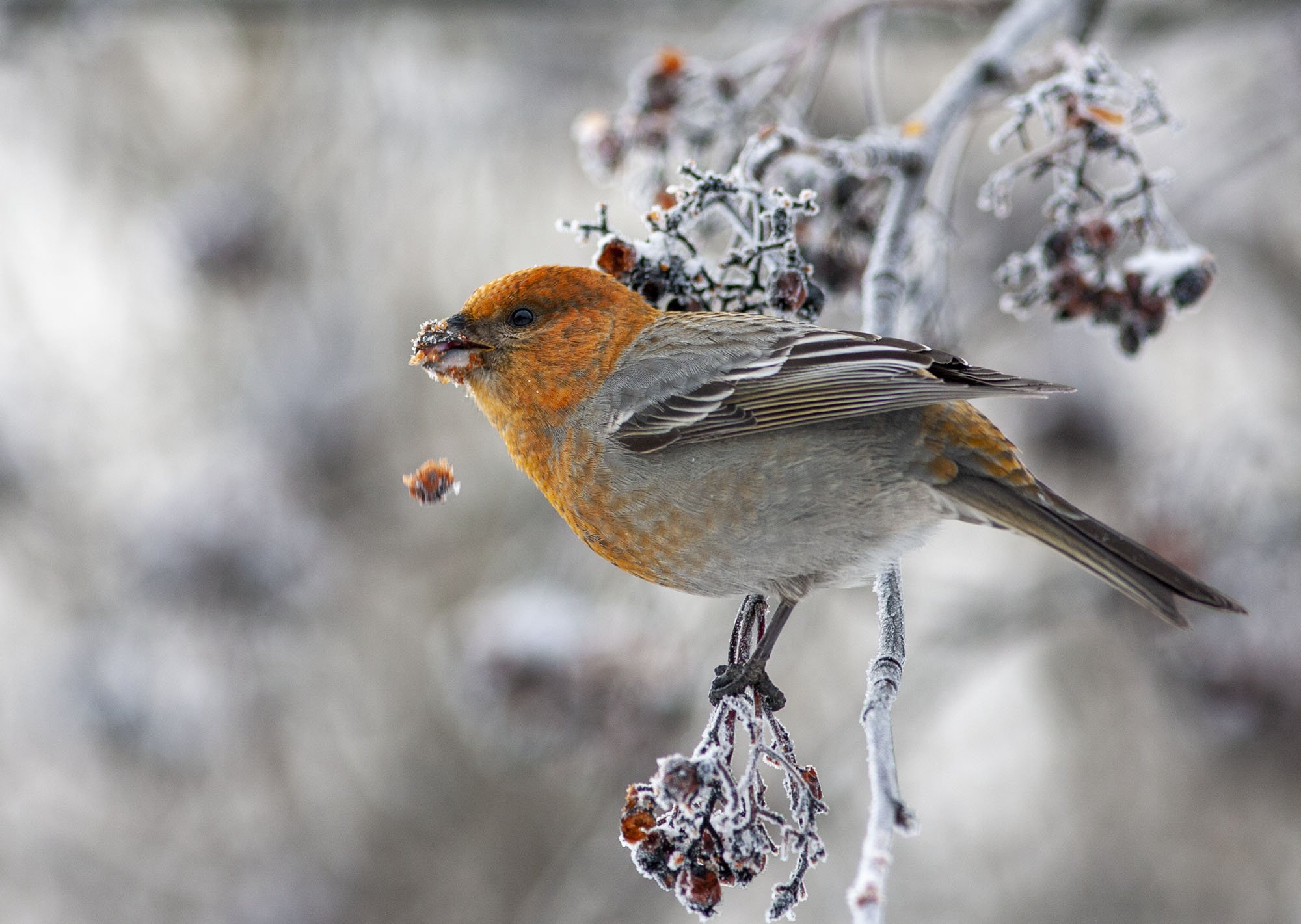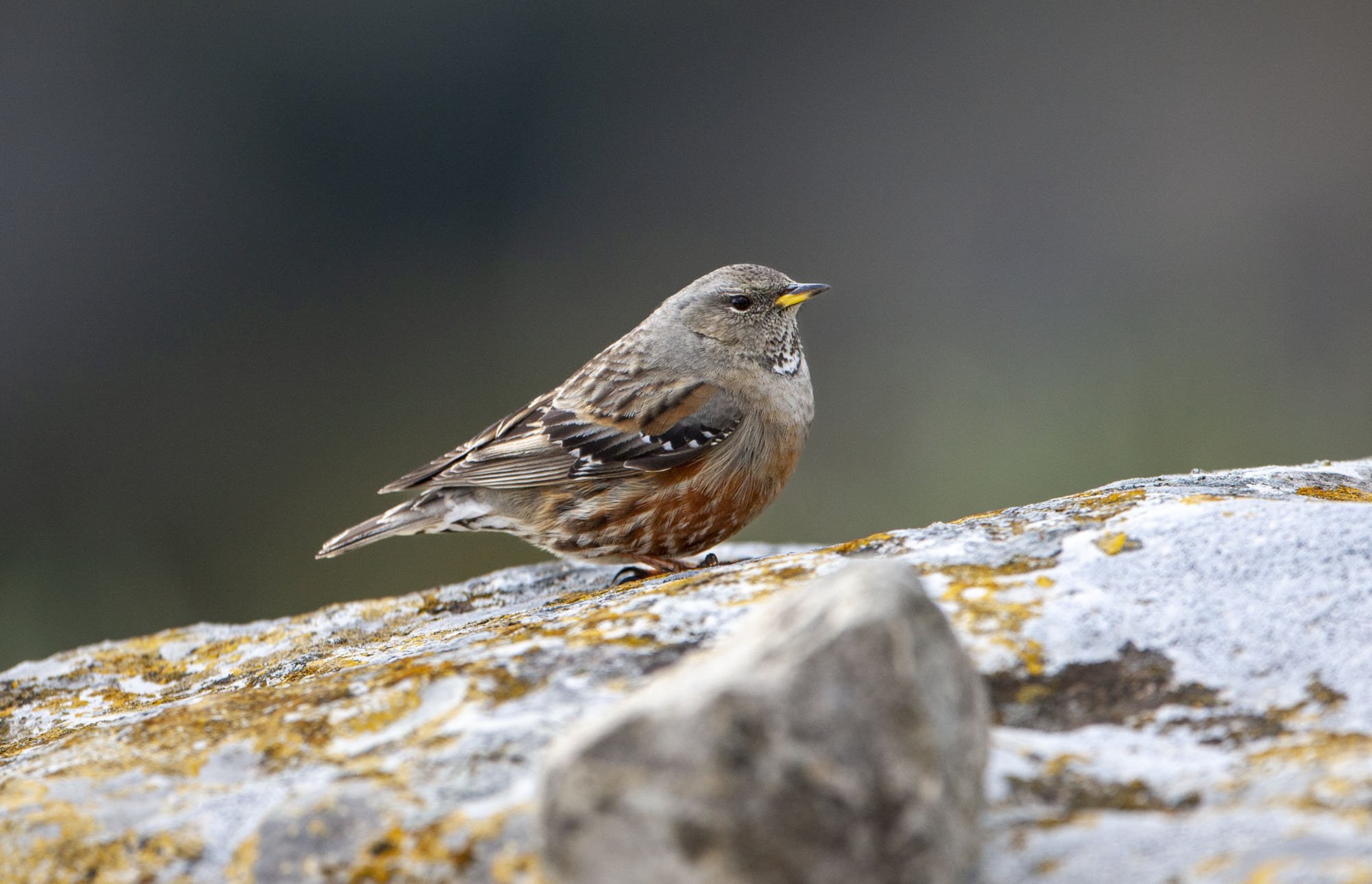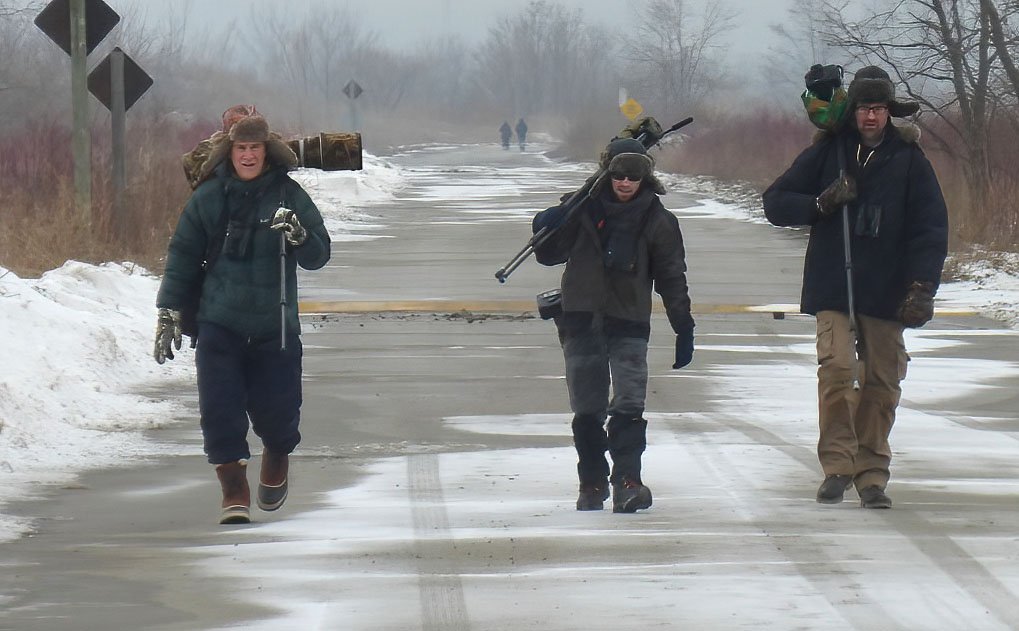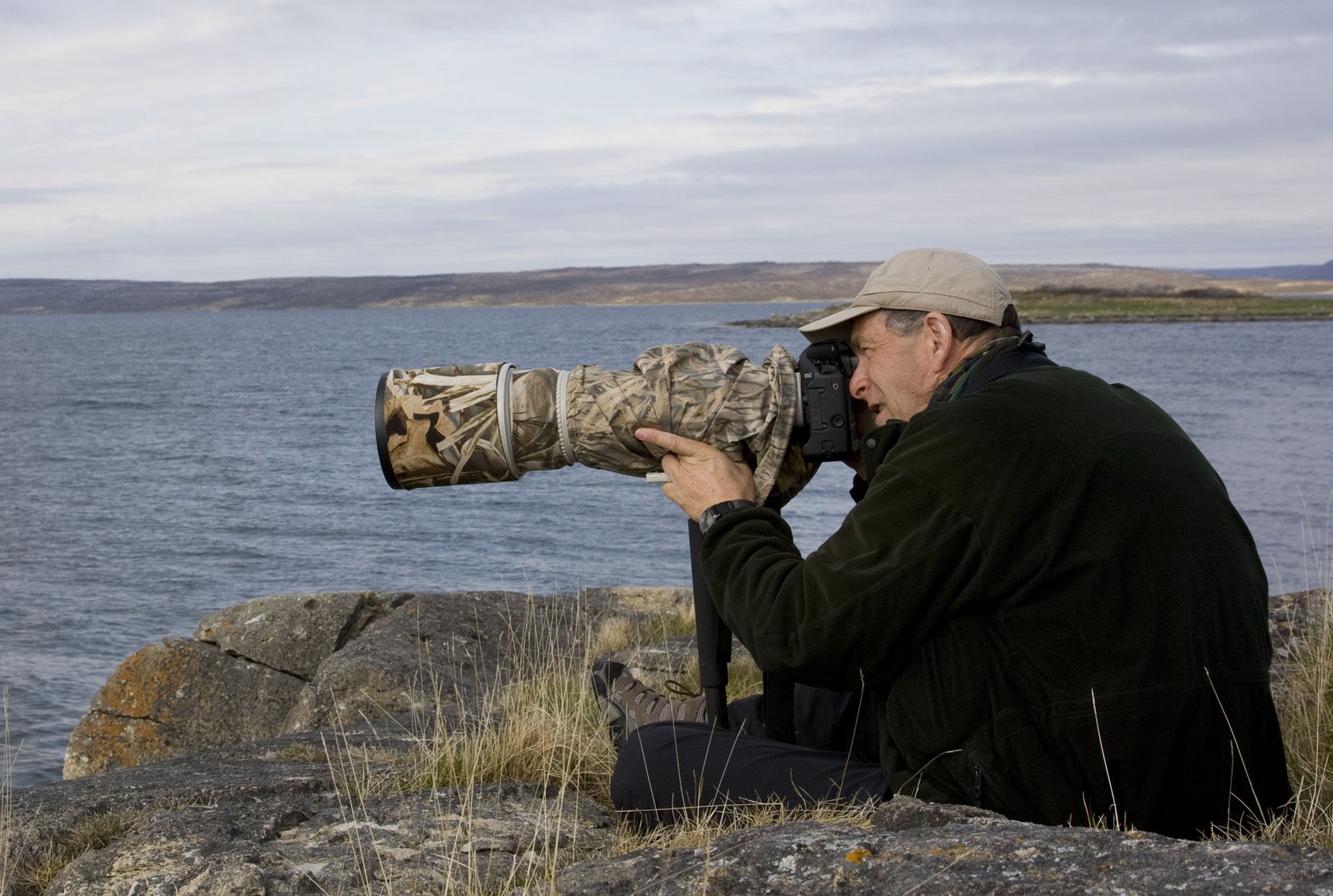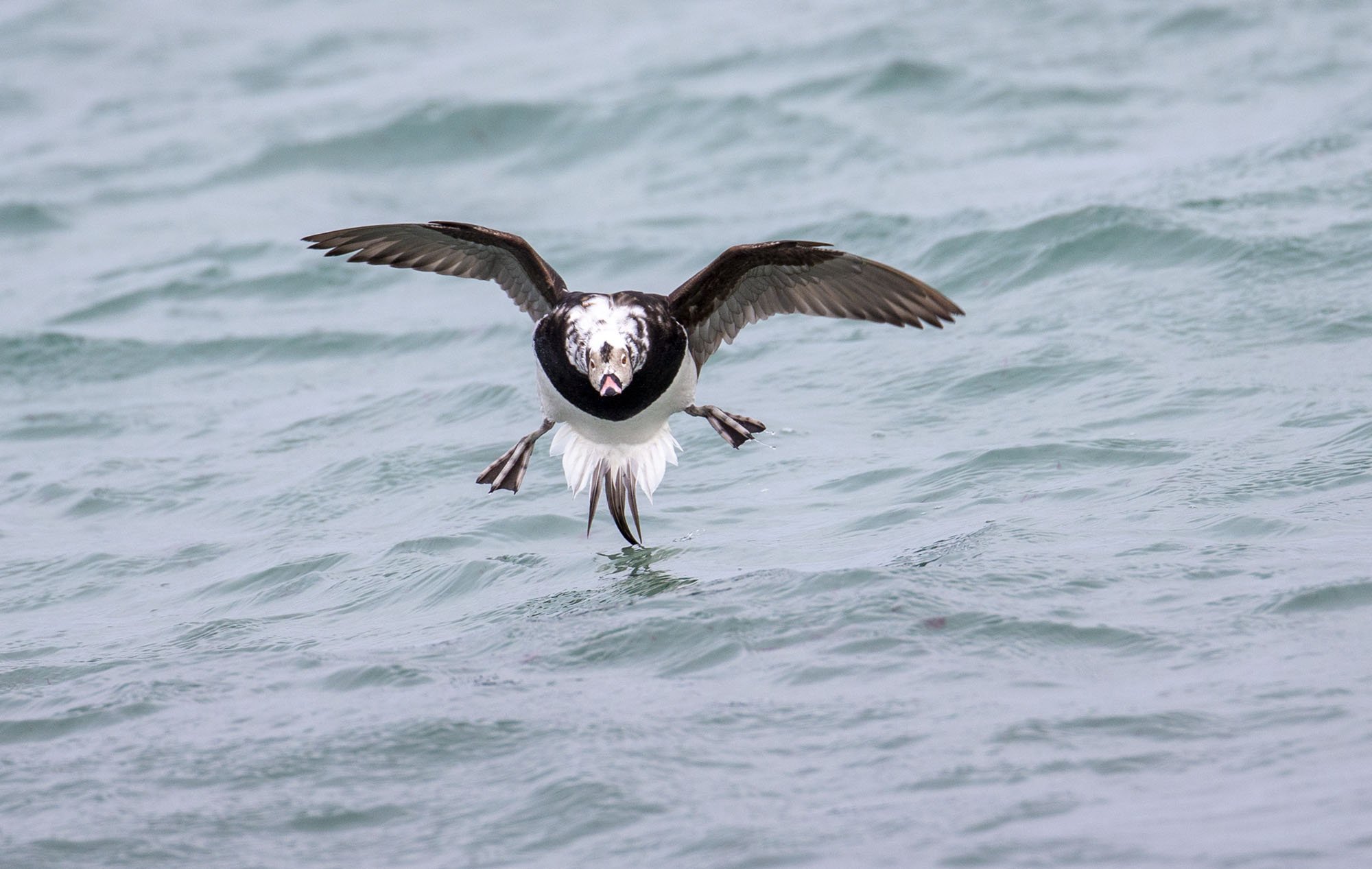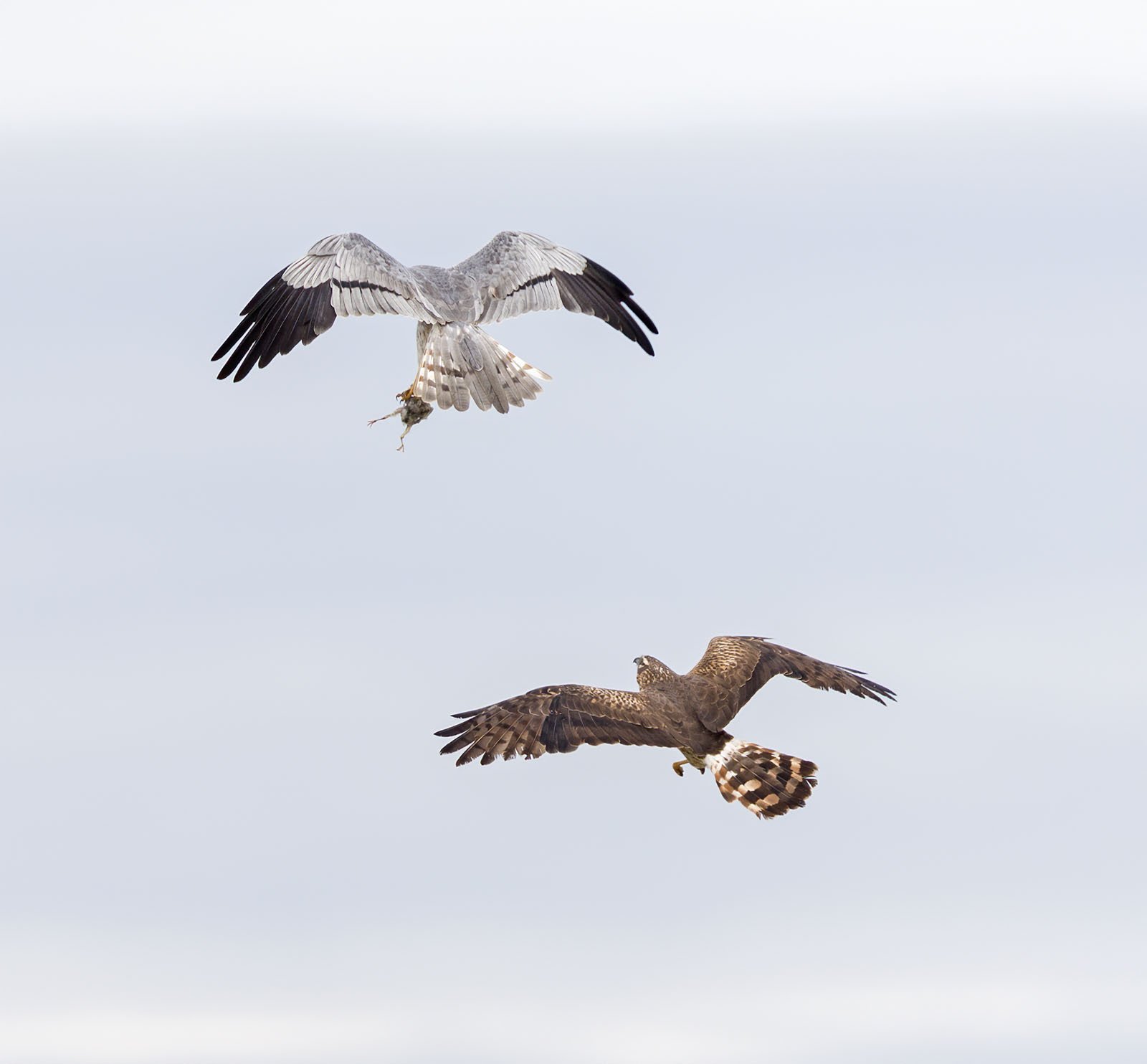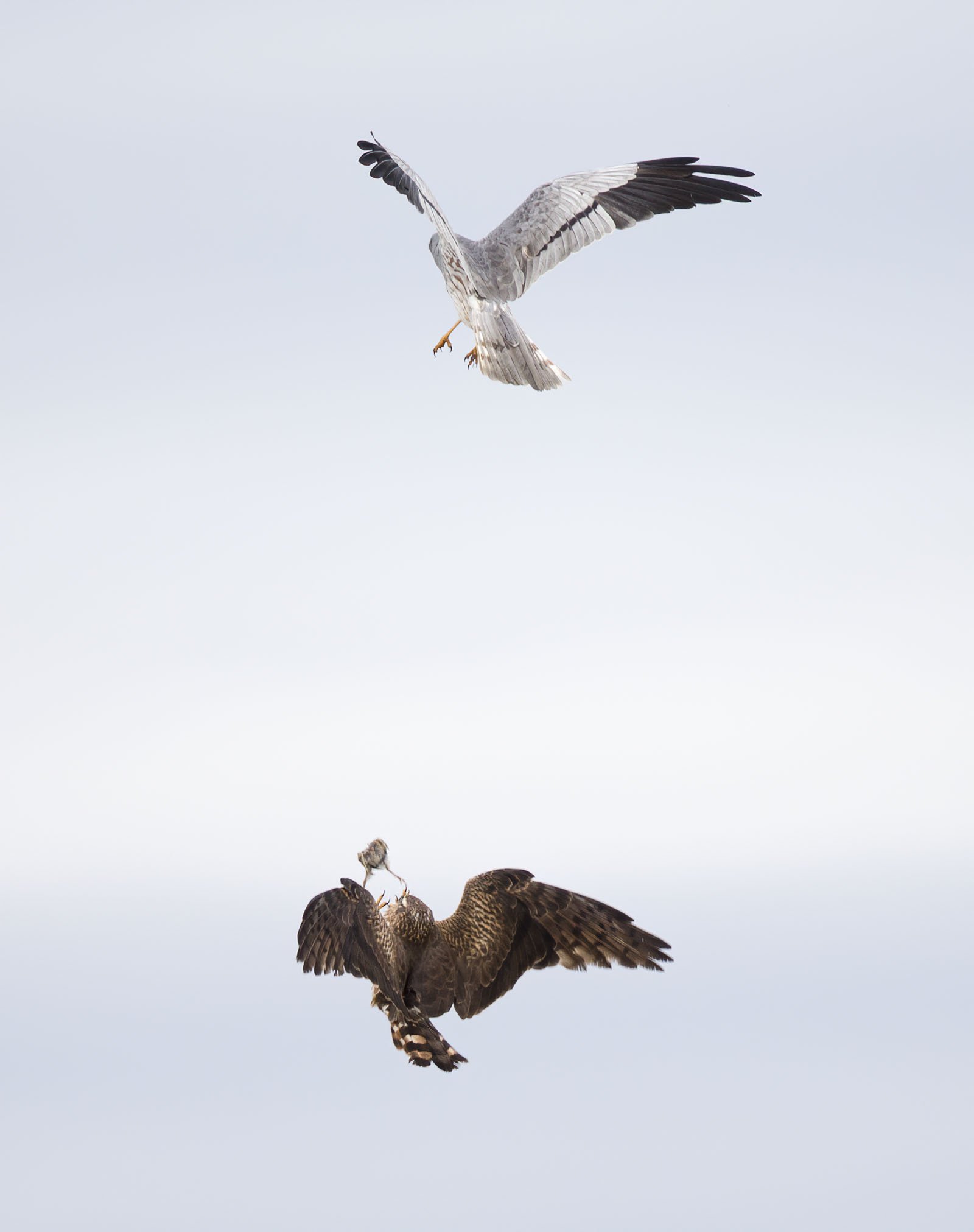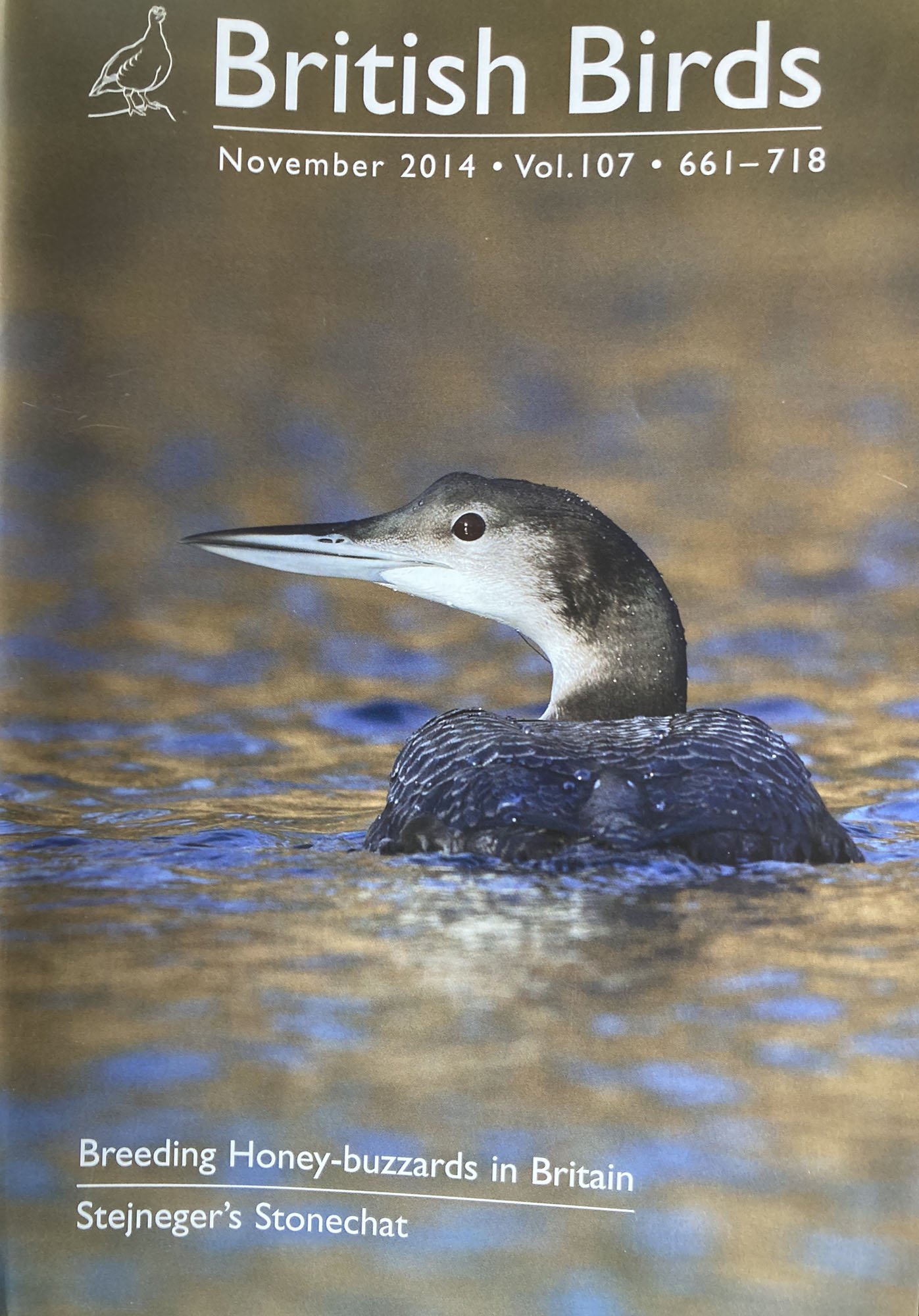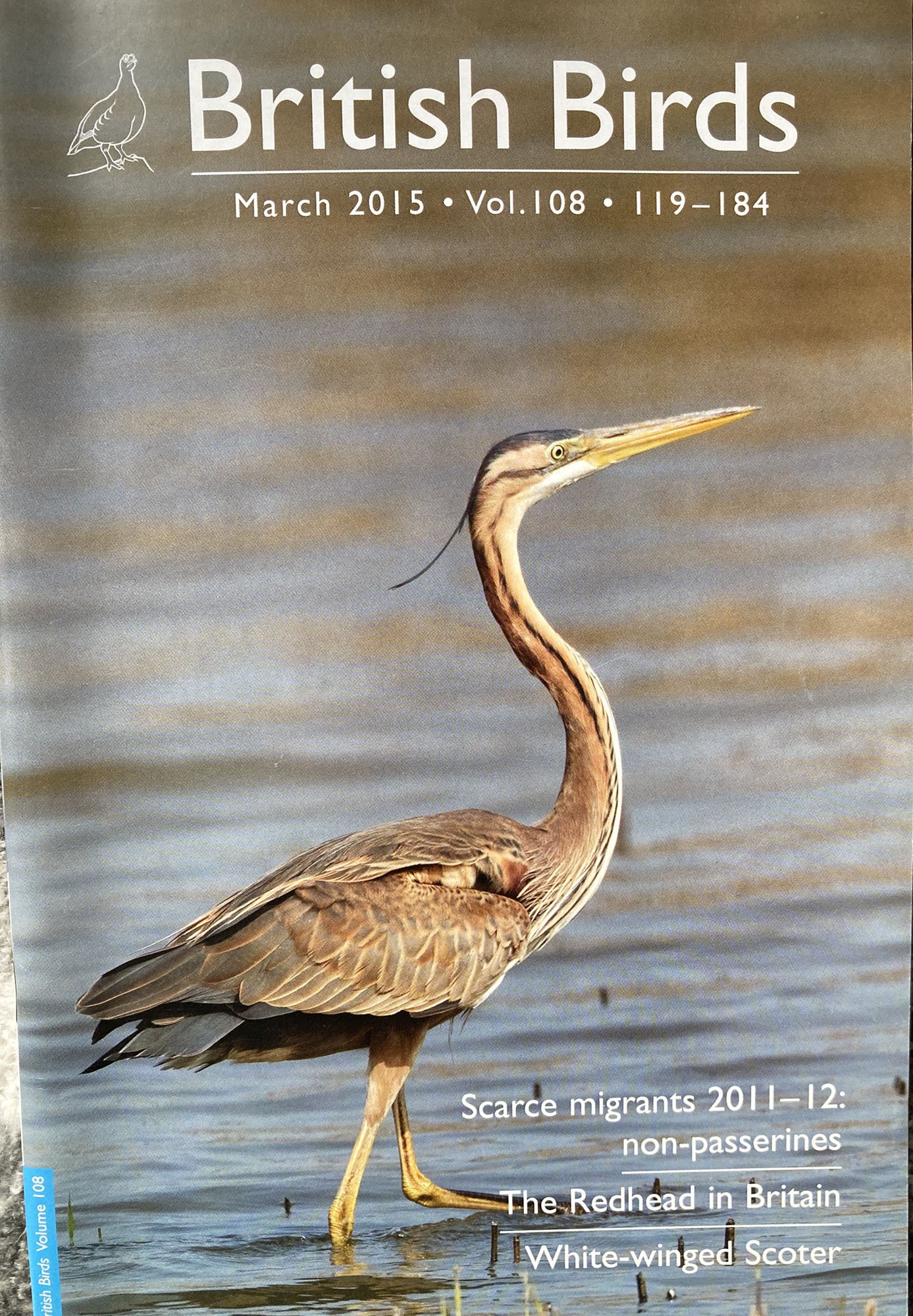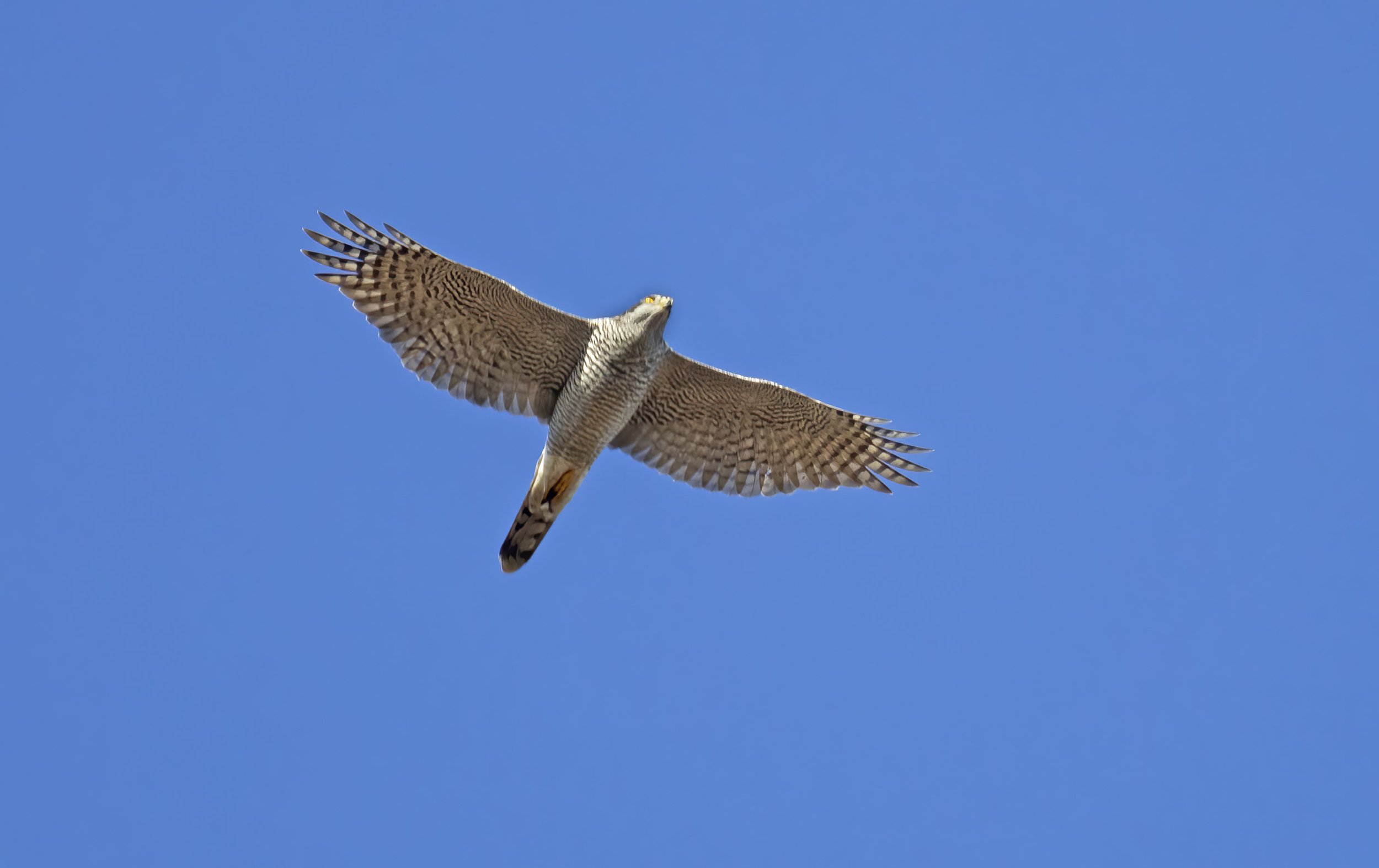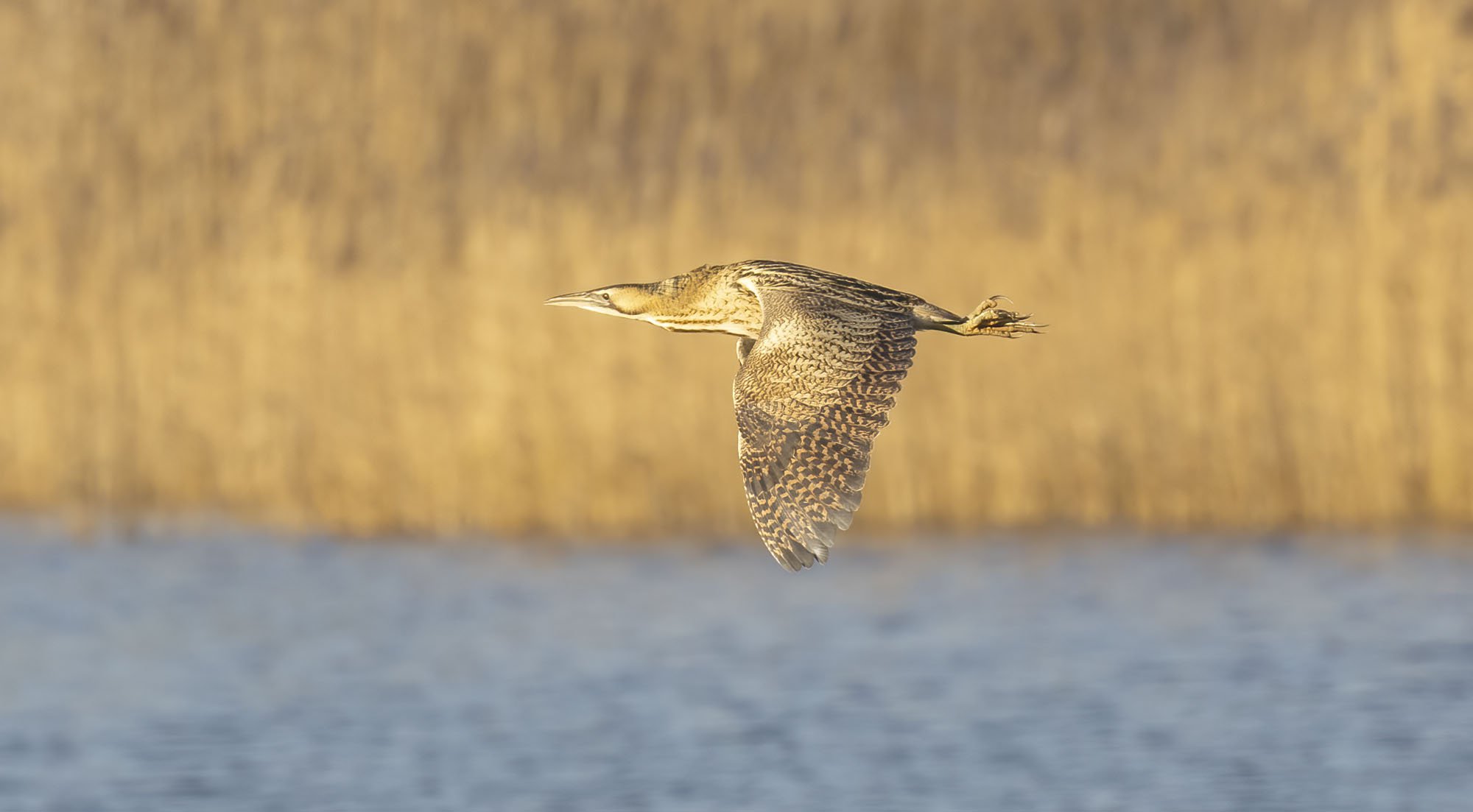My photographic addiction
It all started in about 1970 with the purchase of a Zenit B SLR for what I recall was the princely sum of about £21, a small fortune on the paper round income but it came with a 50mm lens which of course proved to be totally inadequate for bird photography. Hence, I had to buy a telephoto lens that I seem to recall was a Soligor 300mm manual lens. The camera was Russian made and to say the least basic; forget the lack of auto-focus it had no light meter so you had to buy a hand held one or just guess at the right exposure and with slide film costing around £5 for 36 images it was better to be almost accurate. The back came open of its own accord and so was usually taped shut with some insulation tape. You took a picture and then manually wound the film on. It was though a learning tool and it taught me the basics of exposure and shutter speeds and how to focus on birds manually, I even managed the odd flight shot but after a few years it was time to move on to the Nikon F301 according to the web made from 1985 and it had autoexposure but was still manual focus. I also changed the ancient Soligor for a very upbeat Sigma 400 5.6 APO lens, rather akin to the present Canon 400 5.6, it was white and very fancy and took my images to a new level albeit at a price. In 1991 when I went to Point Pelee for the first time the cost of the rolls of Kodachrome 64 that I took with me cost nearly as much as the Transatlantic flight! That combination accompanied me on several foreign excursions along with the KChrome 64 films but it seldom saw any action in Britain due to the lack of approachable birds.
With the Nikon F301 and Sigma 400 5.6 APO tripod mounted at Beidaihe China May 1993 - images of eastern vagrants from the trip appeared in a short article in British Birds - below Pechora Pipit
a scan of a slide of Pechora Pipit Beidaihe China May 1993 - the bird was feeding in a wet reedbed with some very dodgy water - with only trainers available I took off my shoes and walked in in socks - my strange toe infection seemed to stem from there!
Still with the Nikon and the Sigma lens photographing Black Phoebe on the Edward’s Plateau Texas April 1995
I eventually ended up with two F301 bodies and some other smaller lenses but by the late 1990’s it was getting used less and less and in 2001 or 2002 I gained possession of a Nikon Coolpix 880 compact digital camera that came as part of a long service award from work. My idea was to try and combine it with my Swarovski scope and try out this new digi-scoping craze. The camera had a huge 3-megapixel capacity and took Compact Flash Cards that cost about £20 for a 32-kilobyte card, yes that’s kilobytes and it was a while before we dared to move up to a 64-kilobyte card in case you lost all those precious images. By pure chance the extending front lens barrel fitted perfectly in the eyecup of my Swaro scope and I was into digi-scoping. Even advancing to take some flight images; the 880 and scope rig went to Sweden, the Camargue and Spain as well as Cyprus and produced some really nice images if they were rather limited in size. Between 2002 and 2004 I took my best digi-scoped images, pre glaucoma and with a brain that focused fast enough and got the scope onto birds and the camera in position before they moved. Below are a selection of my best images taken in that period. The Bluethroat was Orkney September 2003 and that trip as well as others added a growing realisation that digi-scoping had its limitations when trying to photograph passerines in particular,
A chance meeting at Spurn in 2005 saw me looking at a Canon 20D and the original Canon 100-400 lens. It seemed like a revelation compared to digi-scoping which was becoming trickier with deteriorating eyesight so I jumped ship and went for the Canon EOS 300D and 100-400 in May 2005 but soon realised that body had its limitations and traded it in for the 20D. Since then, I have had:
All Canon, 30D, 40D, 1DIIN, 1D3 x2, 1D4 x2, 5DII, 5DIII, 7D, 7D2, 1Dx, 5D4 x2, R6 x2 and R6II; in researching this post I compiled a table of the main specifications of all these cameras noting the main features that affect bird photography and your back!
Also a list of the lenses that have combined with various bodies
List of Canon Lenses I have owned;
100-400 mark 1, 300 f4, 400 5.6, 300 2.8, 300 2.8 mark 2, 500 f4, 500 f4 mark 2, 400DO2 plus a variety of wide angle lenses and 70-200 f4 x2, 70-200 2.8 mark 2, 24-105, 100 f2.8 macro,
For action photography the real game changer obviously came with Mirrorless cameras and the huge increase in effective Autofocus point covering the full frame
with the 20D and original Canon 100-400 aiming at a cliff with a Wallcreeper somewhere; Les Baux de Provence February
two juvenile brookei Peregrines Cyprus taken with the 20D and original 100-400 lens; I think my copy of the original zoom was not that sharp
Long-tailed Skua on the Arctic tundra at Varanger, Norway, June - 20D with the 100-400 - one advantage of the 100-400 was the ability to zoom out and include the bird in the landscape
another shot from Varanger with the 20D and 100-400 - male Lapland Bunting in song
the incredibly portable and versatile Canon 300 f4 lens here in use on a bog near Utsjoki Finland
female Little Crake Cyprus with the Canon 20D and the 300f4 lens a superb little lens, light weight with great close focus but limited magnification though I did use it with a 1.4 converter
a flock of Spanish Sparrows Cyprus April again with the 20D and 300f4 lens which was much sharper than the 100-400
Long-tailed Skua Varanger Norway with the Canon 30D and 300f4 lans - I only had the 30D for a short period but it was a much better camera than the 20D and I took some memorable shots with it
singing male Bluethroat Varanger with the Canon 30D and 300f4 lans and 1.4 converter - the 1.6 crop factor gave an effective 670mm equivalent
female Dotterel Finland with the 30D and 300f4 plus 1.4 converter
juvenile Hobby watching a midge - the Canon 30D with 300f4 lans - I was hidden in a copse near home after the Hobbies had fledged hoping for a close encounter but never expected to get lucky with this bird landing only 30m away and being totally unaware of my presence
I was not a great fan of the 40D and wished I had kept the 30D but with the new 300 2.8 lens I did get a few images before selling the 40D - Black-necked Grebe Provence January
with the 300 2.8 and 1D4 Kaamanen Finland - monopod in use on static subjects at feeders - it was also -17C
Although boasting only 8Mp the Canon 1DIIN was an amazing camera that won a lot of awards when launched and I took a large number of great images with it mainly combined with the 300 2.8 lens and converters - Alpine Accentor Les Baux de Provence January 300 2.8 with 1.4x
Red-throated Pipit Mandria Cyprus with Canon 1DIIN and 300 2.8 plus 2x converter - effective focal length with the 1.3 crop was 780mm
Magnolia Warbler Point Pelee Ontario, Canon 1DIIN and 300 2.8 with 1.4x converter
Even with the Canon 300 f4 and 1.4 converter the 1DIIN produced some great images - Azure Tit Finland February
Pine Grosbeak Finland Canon 1DIIN and 300f4 lens
Alpine Accentor Les Baux de Provence with the Canon 1D3 and 500f4 lens - 500mm lenses are brilliant but even now heavy and bulky and although I would love to have kept my mark 2 it was just not practical with a bad back and the need to walk long distances while birding
Greater Flamingos Camargue Canon 1D3 and 500f4 lens
Lens wise I started out with the 100-400 then bought the superb 300f4 lens which produced some superb images and worked well with a 1.4x converter but it was a bit old tech and eventually I moved up to the original 300 2.8 lens one of the sharpest lenses ever and used it for several years with the 1.4 and 2x converters. Eventually though you need something bigger and I bought a 500 f4 lens. Around 2011 Canon brought out the new 300 2.8 mark 2 which was lighter and a bit more compact than the original and with a bit of back trouble it was purchased and the 500 sold. July 2012 though brought about a bit an epiphany. Having just located a breeding pair of Montagu’s Harriers I felt a twinge in the back but set off on a long walk with the camera, lens, tripod and scope. The following morning I awoke in agony with a lower disk out and trapping my sciatic nerve. For the following six weeks I was basically laid down taking huge amounts of pain killers and wondering if I would ever pick up a camera again. A Honey-buzzard flew over the garden one day in August while I lay looking at the sky and I tried to lift the camera and 300 to get a record shot but even that was agony and I really did feel like there was no end in sight. Various people talked about surgery and ongoing limitations and without the ability to even sit down life was not pleasant. . Eventually though I was lucky and suddenly in early September I could sit down again and walk a bit and it got quickly a lot better quite quickly and I could drive again. After such an experience I was only carrying the 1D4 with the 400 5.6 lens but as things improved I thought what the heck – Canon had reduced the weight and bulk of the new 500 f4 mark 2 and I went for it. By 2015 the back was twinging again and the weight of the 500 and pro bodies was getting to be a literal pain. Canon had produced a new 400 f4 DO lens, the mark 2, and at just over 2kilos and getting great reviews I sold the 300 and 500 and in March 2016 settled on the go-to lens that I still have and love. Its close focus is not great at 3.3m but it’s just so portable and easy to hand hold, I never use a tripod and seldom use my monopod unless it’s really windy, and the image quality is superb even with extenders. It was always great with the 1.4x but was a little less predictable with the 2x on DSLR’s but with the mirrorless bodies the 2x works just as well as the 1.4x albeit with a bit slower focusing. The weight of the new mirrorless bodies is even better than the 5D4’s and I carry my present rig around all day without problems, mostly! I have also now bought a canon RF 100-400 lens which is a real bargain in as much as it cost only £650 and weights 650g so is truly light weight - it focuses down to 0.8m and with its 400mm mag it is great for insects photography, I was never into macro stuff, and produces good sized images of beed]s and damselflies. the disadvantage is the f8 aperture at 400mm but as its mostly used in summer when light is better that is not a great problem.
Read further down to see why I went for the R6 and R62 rather than the R5 when I moved to Mirrorless.
Toronto February 2014 with the 500f4 a real commitment carrying it particularly on very icy surfaces
with the 500f4 and 1D3 Nesseby June 2009 just after photographing the first Soft-plumaged Petrel for the Northern hemisphere
Soft-plumaged Pterel being chased by Arctic Skua, Nesseby, Varanger June 2009 with the Canon 1D3 and 500 f4 lens
Slavonian Grebe Barton Pits with Canon 1D4 and 300 2.8 lens and 1.4x converter
American Tree Sparrow Ontario February - Canon 1D4 and 500 f4 mark 2 lens
Canon 1D4 and 300 2.8 lens with 1.4x converter European Beeeater Hungary
Just too much kit - with the Canon 300 2.8 mark 2 and the Canon 500 f4 mark 2 at the Steppe Grey Shrike, Grainthorpe Lincs, autumn 2008
Black-throated Diver, North Uist with the Canon 7D2 and 300 2.8 mark 2 with 2x converter - image quality on the 7D2 was not great in most instances and the autofocus was at best unpredictable so I seldom used it - the original 7D was even worse with very poor IQ
Ring-billed Gull North Uist with the 7D and 300 2.8 with 2x converter - focus was almost correct but in dull light the image quality was poor
Iceland Gull North Uist with the Canon 1DX and 300 3.8 mark 2 with 2x converter the difference between this combination and the 7D2 was dramatic - same trip
Another with the 1DX and 300 2.8 mark 2 with 2x converter - Long-tailed Duck, North Uist - challenging AF with bird flying fast towards camera
Above a food pass between a pair of Montagu’s Harriers captured in rapid sequence with the 1DX and 500 f4 mark 2 plus 1.4 converter - the 20MP 1DX was a great camera but just so heavy and cumbersome
Slavonian Grebe with Canon 1DX and 500 f4 mark 2 with 1.4 converter
After selling the 1Dx which was a brilliant camera but weighed a ton I settled for a long spell with my 5D4’s and was extremely happy with them but when mirrorless produced the EVF allowing instant viewing of exposure and advanced auto-focus tracking with eye detection I went for the R6. Quickly got used to it and realised that keeping a 5D4 was no good as my brain could not compute two really different systems so I bought a second R6, why have one of anything! Then along came the R62 with improved AF tracking and battery life and a few more pixels so I had to give it a try and it really is a great camera. I still have an R6 which I use for insects and landscapes and as a carry round on long trecks with the weightless Canon RF 100 - 400 lens which is superb for insects with its 0.8m close focus, extreme sharpness and weight of 650 gms.
Upland Sandpiper Alberta - Canon 5D4 with 400DO2 lens and 1.4 converter - the image quality of the 5D4 was superb and the autofocus was so much better than the 7D2 - with 30MP it also allowed heavy cropping and the light weight of this combination was a real bonus
the 5D4 with 400 DO2, Head Smashed In Buffalo Jump Alberta - the 400DO2 measures only 23cms x 12cms without the lens hood and at 2.1kg its is highly portable and hand holdable, don’t usually use the monopod even
Not an easy target this Audubon’s Warbler was picking insects off the water surface in flight and the light was pretty dismal - Canon 5D4 and 400DO2 lens with 1.4 converter Alberta
another flight shot of the Audubon’s Warbler with the 5D4 and 400DO2 and 1.4x 1/1600 sec
So, with the 5D4 producing such good images why swap to Mirrorless? Was it just another gimmick of camera manufacturers looking for a new sales outlet? In the outset it seemed that mirrorless cameras were not up to action photography but then Canon came out with the R5 and R6 bodies with a huge increase in cross type focus points, focus eye-tracking and increased frame rates. With the advantage of the electronic viewfinder, you can actually see in real time what exposure you are getting on the bird and changing exposure as you shoot means getting correct exposures is a doddle. The view is not optical and it does take a bit of getting used to indeed with my 400DO2 I found that locating birds was initially tricky as the image seemed slightly offset downwards but after a few days it was a new normal. Both cameras are full frame so no crop with the main difference, as I don’t do a lot of video, being the Megapixel count, 20 for the R6 and 45 for the R5. So why did I go for the R6? Well initially I was still not totally convinced I could get on with the concept so thought I would spend less in case I decided to swap back to the DSLR. After the 30MP of the 5D4 20MP on the R6 was a fair old drop and does limit heavy cropping but as I have heard repeated if a bird is too far away then it’s too far away and no matter what lens you have it will still be too far away. All sorts of other factors come into play with distance mainly atmospheric imperfections, a real problem with the air in the UK, but also the slightest movement increases focus issues. So why not get the 45MP R5? Well, I decided I don’t need 45MP images that take lots of time to process, take up a lot of computer memory and storage space and with 45MP the effects of atmospherics and movements are increased plus you need a different CF Express card to get the most out of the R5 and they are stupidly expensive; OK if you only buy the odd one but for a foreign trip buying 10 or more would be stupid money. The R6 has two UHS-II SD card slots and I still stick with the Sandisk Extreme Pro 170MB/sec cards of which you could get a 64GB card for about £16 but recently gone up to around £20. Not super-fast but I shoot in bursts trying to pace myself and get the best action rather than just firing continuously and I have only filled the buffer once so far.
People invent all sorts of reasons for wanting more megapixels on their bodies but as noted above I took some of my best ever images on the Canon 1DIIN at 8MP and the 1DX at 20MP and I have had cover images printed on several copies of British Birds with various bodies from the 20D and 100-400, latest issue Rock Dove in Co Galway to the 1DX but none of the images had more than 20MP in the original image and most are all are cropped from that to a vertical format; the smallest file size was 7MP for the Snow Bunting.
If you want a straightforward and incisive definition of how many pixels you need for what you do, please watch the YouTube video linked below:
So what else does mirrorless offer?
The autofocus system is such a massive leap forward on the 5D4 and 1DX with eye tracking and the camera’s ability to just stick to the subject you have chosen allowing for changing compositions but also allowing you to follow rapidly moving birds on the deck and in flight. It has its limitations though and you have to work around problems that arise to get the most out of the camera. I have never gone for this back button focus malarky preferring to use the shutter button in combination with a set up that I have developed that allows me to quickly switch between different focus options and make the camera work how I want it. Basically, I have the button top right on the back with a cross on it, AF Point Selection Button customised to cycle between four methods: single very small AF point, used for locating small subjects in cluttered scenes like a dense bush. Large single point for subjects where the larger zones are not picking it up maybe just a small bird, large zone that I sometimes works better for birds in flight and whole area that I use most of the time. All are set to have eye tracking and even the smallest AF point will lock onto a very small subject and track it as it flies of moves around. With my thumb on this button and forefinger on the shutter button I can quickly change the AF to fit changing situations and counteract discrepancies in what the camera thinks I want to focus and what I want it to focus on but most of the time it has to be said that with AF, set to detect animals and eye detection the success rate is very high even in full area mode. The fact that you can use the whole sensor area as the active focus points go right to the edge of the frame is also a massive advantage over the restricted areas in the DSLR’s particularly with birds that are often flying quickly and erratically. So, autofocus is a real game changer but there is one problem and apparently it affects all mirrorless cameras and that is the camera focussing on a background subject and then refusing to pick up a closer subject even though it is in the open and clearly visible. The work round is to quickly focus on the the ground somewhere near the subject and then jump to the closer subject; it should not happen and you may miss a few shots but there seems to be no resolution of this problem as yet!
Totally silent shooting in electronic shutter mode is another game changer when photographing birds and wildlife. The 1DX made such a racket with its shutter that birds often flushed as soon as the machine gun went off but I have found with the R6 and R62 that birds will often even let you point the lens at them clearly waiting for a noise and if they hear nothing many will then start to relax and settle even though you may have taken 100 images by then. In a country where birds are hardly ever tame and usually, with reason, are afraid of human beings this is a massive bonus.
A flip out screen may seem like a small advantage but shooting at low angles and even overhead becomes a breeze and if you have bad knees it’s easier to get a low angle shot.
Red-flanked Bluetail Flamborough November 2021 - picking out a bird through all this foliage and branches would have been almost impossible with the AF on a DSLR but the eye detection on the R6 has even nailed that on this small bird
R6 autofocus working on the Bempton Black-browed Albatross ignoring the massive cliff in the foreground
Black-browed Albatross Bempton July 2021 - I was initially abit concerned whether image quality would be as good on the R6 and the 5D4 but i think this answered my question
Purple Emperor - standing the camera and lens on the floor with the flip screen used for focusing
And why go for the R62 if I was so happy with the R6. Well, I still have an R6 as a backup and insect, landscape body. The R62 though has a few notable benefits;
The sensor is a new one with 24MP up from 20 on the R6.
Battery life is much better – this is quoted as a small improvement in all reviews but in my experience the same battery lasts at least twice as long in the R62. I was charging a battery almost daily with the R6.
Frame rate is up to 40fps double the R6 though I don’t tend to use it on 40fps BUT the better control of rolling shutter on flying birds is a marked improvement and something I wanted as I do a lot of raptors in flight.
Autofocus is touted as a bit better than the R6 with a system based on the R3 and it does seem to stick better to subjects from what I have seen so far.
There is a dedicated Video / photo switch which I have used and as it allows you to use the same customised settings for video as photo, I always shoot manual exposure, then it’s a lot easier than messing about with the R6 but as I say I know zero about video and only do bits when I think I need to!
Cetti’s Warbler with the R62 and 400 DO2 plus 1.4x - to focus on a subject this size is pretty amazing
female Goshawk R62 and 400 DO 2 with 2x converter
Above a sequence of a Bittern flying in and landing R62 and 400DO2 plus 1.4x converter
Skylark flying against a reedbed - I like to try and test autofocus systems to the limit - flying passerines are a real challenge







